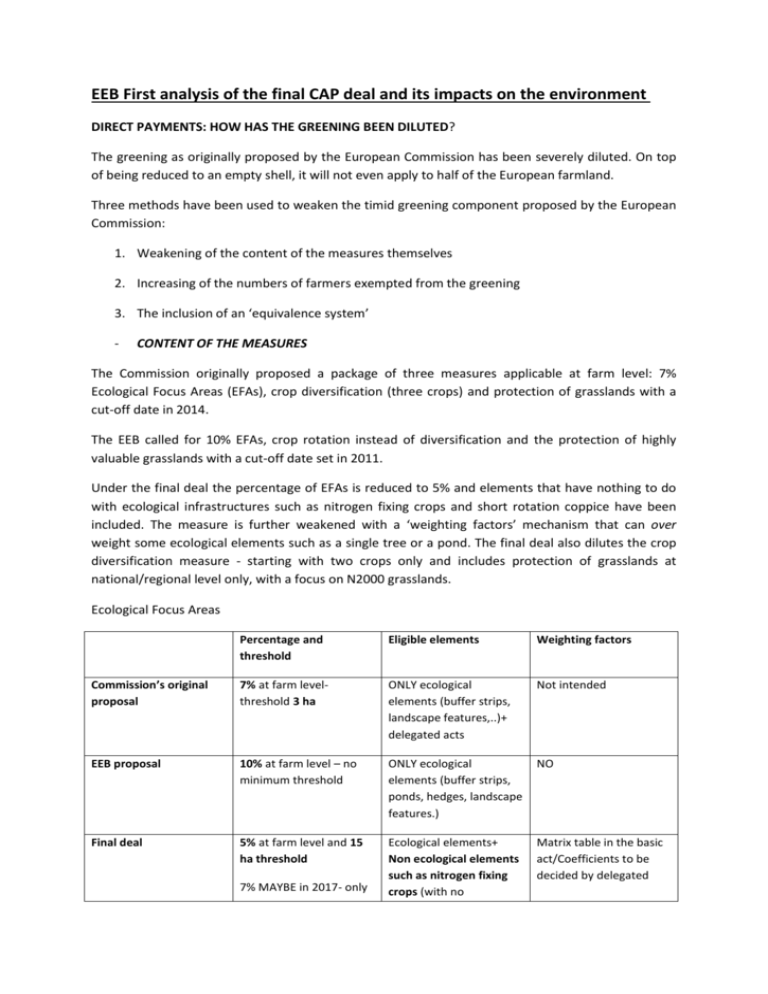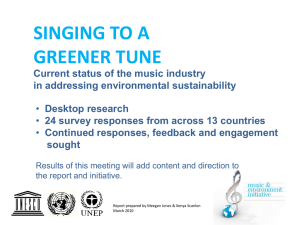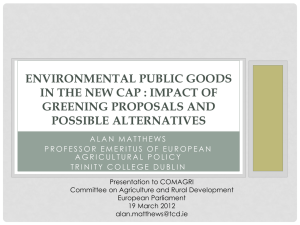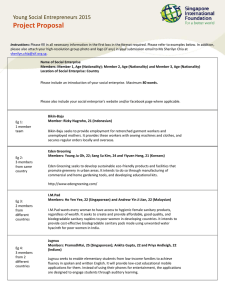The EEB has undertaken an analysis of how the final deal compares
advertisement

EEB First analysis of the final CAP deal and its impacts on the environment DIRECT PAYMENTS: HOW HAS THE GREENING BEEN DILUTED? The greening as originally proposed by the European Commission has been severely diluted. On top of being reduced to an empty shell, it will not even apply to half of the European farmland. Three methods have been used to weaken the timid greening component proposed by the European Commission: 1. Weakening of the content of the measures themselves 2. Increasing of the numbers of farmers exempted from the greening 3. The inclusion of an ‘equivalence system’ - CONTENT OF THE MEASURES The Commission originally proposed a package of three measures applicable at farm level: 7% Ecological Focus Areas (EFAs), crop diversification (three crops) and protection of grasslands with a cut-off date in 2014. The EEB called for 10% EFAs, crop rotation instead of diversification and the protection of highly valuable grasslands with a cut-off date set in 2011. Under the final deal the percentage of EFAs is reduced to 5% and elements that have nothing to do with ecological infrastructures such as nitrogen fixing crops and short rotation coppice have been included. The measure is further weakened with a ‘weighting factors’ mechanism that can over weight some ecological elements such as a single tree or a pond. The final deal also dilutes the crop diversification measure - starting with two crops only and includes protection of grasslands at national/regional level only, with a focus on N2000 grasslands. Ecological Focus Areas Percentage and threshold Eligible elements Weighting factors Commission’s original proposal 7% at farm levelthreshold 3 ha ONLY ecological elements (buffer strips, landscape features,..)+ delegated acts Not intended EEB proposal 10% at farm level – no minimum threshold ONLY ecological elements (buffer strips, ponds, hedges, landscape features.) NO Final deal 5% at farm level and 15 ha threshold Ecological elements+ Non ecological elements such as nitrogen fixing crops (with no Matrix table in the basic act/Coefficients to be decided by delegated 7% MAYBE in 2017- only after co decision process - sustainable management requirements!) and short rotation coppice acts EXEMPTION MECHANISMS The minimimum threshold (number of ha) to get exempted from the greening measures was set at three hectares by the European Commission. Under the final deal the threshold has been increased to 15ha for Ecological Focus Areas (EFAs) (under 15ha farmers do not have to have EFAs which means that 35,5% of the EU’s utilisable agricultural area (UAA) will be exempted which equals to 89% of all holdings!) On top of that farmland with 75% or more grasslands areas or crops under water are exempted. Special exemptions for MS with a high percentage of forests have also been included. Permanent crops are also exempted from EFAs, which was the only applicable greening measure for these crops. This exemption means that land under permanent crops will not have to follow any greening requirement. Crop diversification: The final deal exempts farms below 30 ha from having to do diversify with three crops, this equates to 46% of UAA or 94 % of all holdings. Grasslands: Now grasslands can be protected at regional or national level instead of a strict protection at farm level. A positive element that ensures that grasslands in Natura 2000 are strictly protected has been added though. - EQUIVALENCE MECHANISM On top of the weakening of the content and the exemption of around half of the EU farmland from greening measures or even more, the final deal includes the possibility for farmers not to have to comply with greening measures. Instead their farming practices would be considered ‘equivalent’ to the greening measures via a list of equivalent measures. This equivalence mechanism risks not only watering down the impact of greening measures but will also lead to an increased level of complexity and bureaucracy. Even if a strict equivalence of measures is better than a more general equivalence of benefits, this approach still weakens the greening and risks blurring the baseline for requirements and payments in Pillar 2. Looking at all of these measures together this means that in some cases more than half of the EU farmland will be exempted from a few weakened measures. It should be pointed out that some of the greening measures as proposed by the Commission were already required under rules requiring that farmers comply with other legislation to qualify for payment (cross compliance) in some Members States (e.g France) and hence compulsory until now. This agreement is therefore a step backwards on previous reforms. - MANDATORY NATURE OF THE GREENING While the Commission introduced a mandatory greening the final deal failed to make all direct subsidies conditional upon a package of simple and effective measures that would benefit the environment. Farmers unwilling to comply with the greening will now at most lose 125% of their greening payment, and this loss will only occur after several years of non-compliance. RURAL DEVELOPMENT PILLAR - HOW ITS ENVIRONMENTAL PERFORMANCE HAS BEEN ERODED? In addition to the dilution of the greening of the first pillar, the final deal erodes further any hope for the environmental delivery of the future CAP by eroding the minimum spending for the environment under the second pillar. While the European Commission put in a weak recital a 25% minimum spending for environmental measures, the European Parliament made it compulsory in an article and only covered agrienvironment measures and organic farming. This was supported by a strong majority in the Parliament Plenary. Unfortunately, if the final deal includes a higher and compulsory minimum spending (30%), it does not limit it to actual environmental measures and includes non environment related measuresthat risk eating up the whole 30% without bringing any environmental benefits to our rural areas. The deal includes investment measures in minimum spending (art 18). This measure has little to do with the environment and is under axis 1 (competitiveness) of the current Pillar 2. Currently 44% of the Rural Development (RD) budget currently goes to axis 2 (environment) and a large share is spent on Less Favoured Areas (Areas of Natural Contraints or ANCs in new CAP). By adding the 44% to the share represented by the investments measures, we end up far above the 30%. This would allow MS to reach the minimum 30% easily while even dropping some of the measures that matter for the environment such as Agri Environmental Measures or Organic Farming. This, in addition to the severe dilution of the greening in Pillar 1, the possibility of reverse modulation and the smaller budget overall and new measures added into Pillar 2 for ‘risk management’ (an ‘income stabilization tool’ coming on top of the income support under pillar 1 , mean that the environment will almost certainly be worse off. - CROSS COMPLIANCE (HORIZONTAL REGULATION) The European Commission proposed to include two very important pieces of legislation in ‘cross compliance’ – forcing farmers who receive funding to comply with other legislation. In this case the Water Framework Directive and the Sustainable Use of Pesticides. The final deal removes these two pieces of legislation from cross compliance and only includes them in the farm advisory system (which are in many cases run by the companies that sell the pesticides). This will lead to situations where farmers who pollute water and / or use illegal chemical substances will still receive public money. Finally the Commission proposed to introduce into Cross Compliance a new ‘Good Agricultural and Environmental Condition’ measure to protect wetlands and carbon rich soils but the final deal has deleted this very valuable element. - AND DOUBLE FUNDING? Even if the final deal includes a reference to the "no double funding principle" it is still very unclear how this will be transposed and whether it will be done efficiently.








